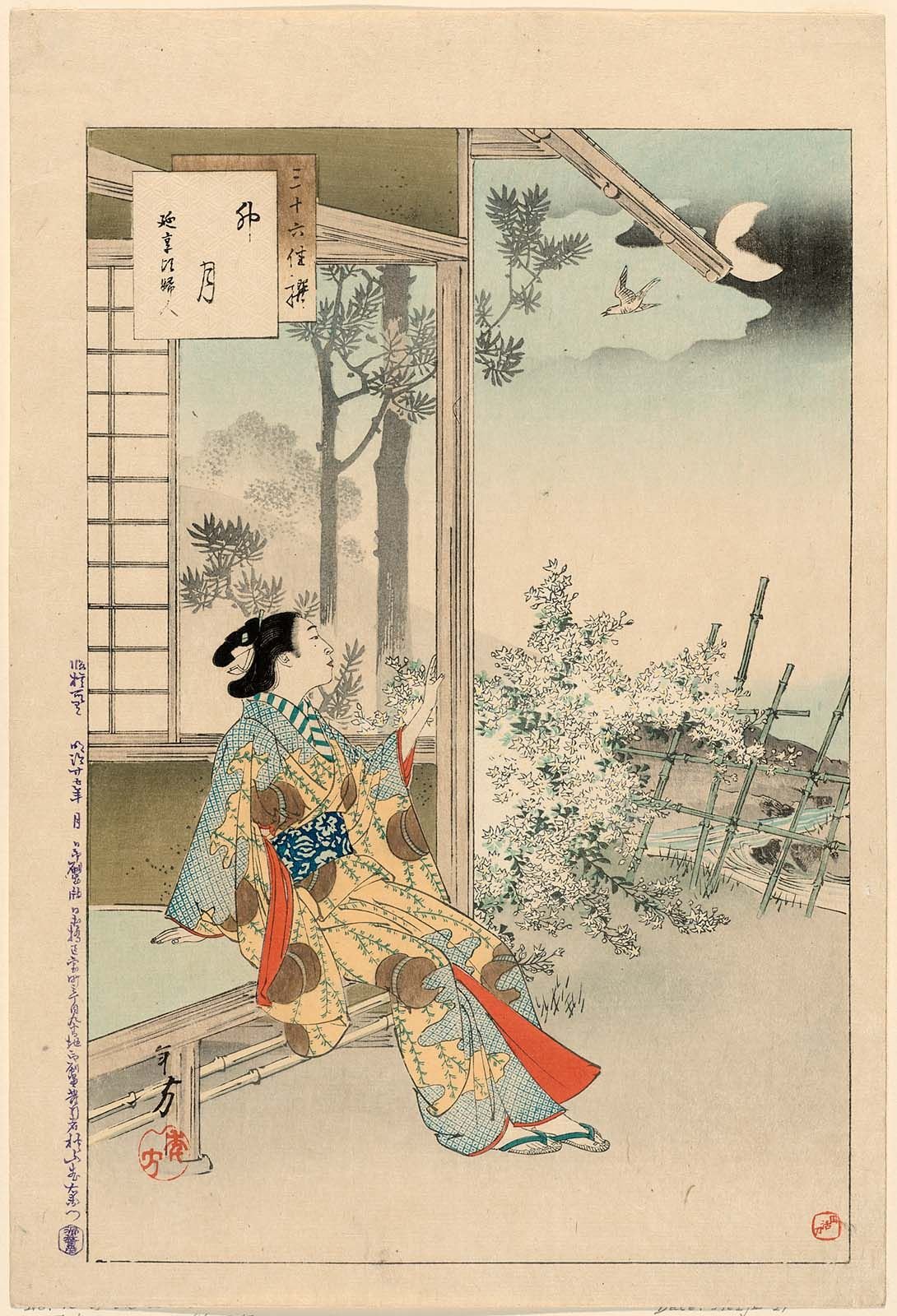Ransetsu left behind a body of work marked by quiet sorrow and refined restraint. Here he gives us a moment of stillness, spring, and yearning.
うまず女の雛かしづくぞ哀なる
umazume no hina kashizuku zo aware naru[1]
a childless woman
tenderly she touches
the little dolls for sale
—Ransetsu[2]

Ransetsu was a student of Bashō as well as one of his closest disciples. Bashō thought very highly of him and once wrote, “I cannot equal Ransetsu in poetical austerity.”
Childless Woman is perhaps his most famous haiku. You can imagine in your mind the sad woman who was denied the pleasure of having her own kids, looking longingly at the dolls, gently touching them while imagining what it might have been like to have her own baby. It gives us a very poignant image.
It may not be obvious for those unfamiliar with Japanese culture, but the dolls the poem refers to would be Hina dolls for Girl’s Day on March 3rd. It is a spring kigo (season word).